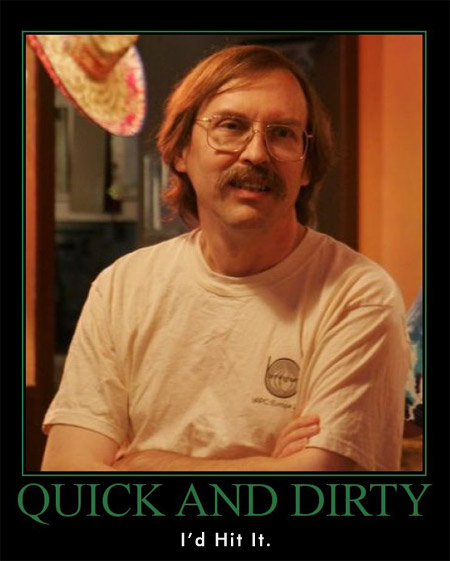For example, there was some point in my life where I told myself I would avoid any project heavily involving PHP.
But why? What's wrong with PHP? Yahoo and Facebook use it...and I haven't used it enough to warrant such strong feelings.
I wanted to explore this (baseless?) apprehension further, and I thought of this characteristically absurd/profound quote from Perl creator Larry Wall:
"Perl is worse than Python because people wanted it [to be] worse."
Larry Wall
The goodness of Perl v. Python is a common religious argument. The above quote squelches the debate once and for all, but begs further questions.
Who is they? Why did they want Perl to be worse? Do the words I added ([to be]) change what Larry actually meant?
Consider this Mind Hacks post about trends and their origins; the concepts extend to any sort of idea that can grow legs. Trends in technology are the same way, and spread because a distant idea reached some critical mass of connectivity and settled in with your own circle of peers.
Developers can vote for or against any technology by speaking for or against it, but their most powerful influence is in choosing which technologies to devote their energies toward learning and improving. Enthusiasm for a project leads to expertise contribution, and contribution leads to enthusiasm.
Conversely, people who have a distaste for a technology will discourage others. They (the technologies) will languish if their community does not grow.
In other words, labeling a technology good or bad is a self-fulfilling prophecy given enough influence and/or critical mass. Soon companies using the "good" technology will flourish with resumes and job postings for "bad" technologies will receive lesser attention, serving only to reinforce existing stereotypes.
I'm largely paraphrasing Paul Graham. He wrote a great essay on this phenomenon, which he calls "The Python Paradox".
I believe this is what Larry was getting at. And it explains my own PHP aversion, as my experiences were underwhelming at worst, but the number of developers I've heard lament PHP convinced me to stay away, as if it's the bad part of town.
Arguing over which language is better or worse is a waste of time; what matters is the consensus of the larger community (see wikiality). Even if it's unjustified. But just like a neighborhood can turn around, opinions change, and that's why phrases like "JavaScript Renaissance" are thrown around. And although I can't shake all the PHP prejudice, I wouldn't make a point of avoiding it (PHP that is), either.




